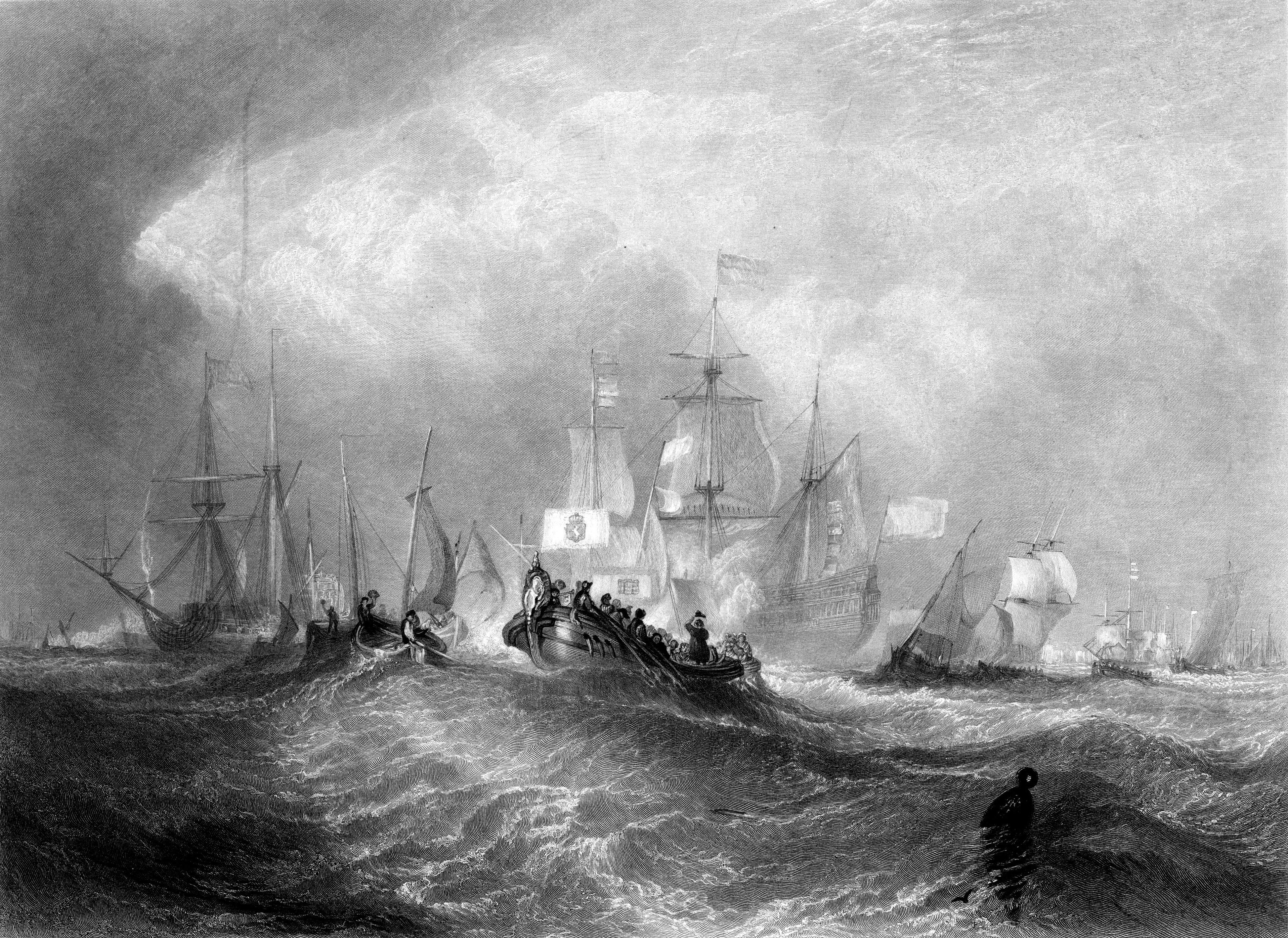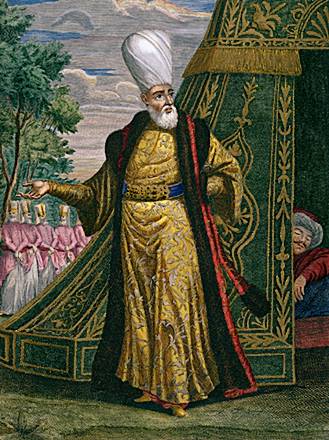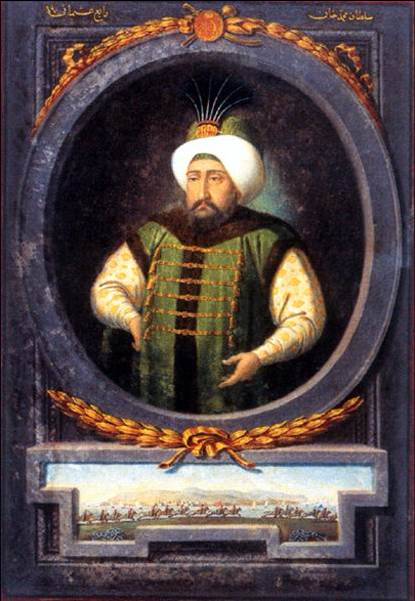|
Abaza Siyavuş Pasha
Abaza Siyavuş Pasha (died 23 February 1688) was a short term grand vizier of the Ottoman Empire who held the post during one of the most chaotic periods of the empire. Early years He was of Abkhazian origin. He was a servant of Köprülü Mehmed Pasha, an able grand vizier who died in 1661. By marrying Köprülü Mehmed Pasha's daughter, he became a relative of the powerful Köprülü family. Together with his brothers-in-law (Köprülüzade Fazıl Ahmed Pasha and Köprülüzade Fazıl Mustafa Pasha), he participated in a number of military campaigns. In 1684, Buda (a part of Budapest, the capital of modern Hungary, then a part of Ottoman Empire) had been besieged by the Austrians under the command of Maximilian. Siyavuş Pasha stormed the Austrians and forced them to lift the siege. This was one of the few Turkish victories in the Great Turkish War. As a grand vizier Ottoman sultan Mehmet IV ("the Hunter") was inattentive to state affairs, especially in the war. The ... [...More Info...] [...Related Items...] OR: [Wikipedia] [Google] [Baidu] |
Abazins
The Abazin, Abazinians or Abaza ( Abaza and Abkhaz: Абаза; Circassian: Абазэхэр; ; ; ) are an ethnic group of the Northwest Caucasus, closely related to the Abkhaz and Circassian peoples. Today, as a result of atrocities committed by Imperial Russia during the Circassian genocide, they live mostly in Turkey, Syria, Jordan, Egypt and in Karachay-Cherkessia and Stavropol Krai in the North Caucasus region of Russia. The Tapanta ( :ru:Тапанта), a branch of the Abaza, lived between the Besleney and Kabardian princedoms on the upper Kuban. Abaza people historically speak the Abaza language, a Northwest Caucasian language most closely related to Abkhaz, and more distantly related to the Ubykh and Circassian languages. There are two dialects of Abaza spoken in Karachay-Cherkessia: ''Ashkharua'' and ''Tapanta''. The culture and traditions of the Abazin are similar to those of the Circassians. On many old maps Abazin territory is marked as part of Circassia ... [...More Info...] [...Related Items...] OR: [Wikipedia] [Google] [Baidu] |
Budapest
Budapest is the Capital city, capital and List of cities and towns of Hungary, most populous city of Hungary. It is the List of cities in the European Union by population within city limits, tenth-largest city in the European Union by population within city limits and the List of cities and towns on the river Danube, second-largest city on the river Danube. The estimated population of the city in 2025 is 1,782,240. This includes the city's population and surrounding suburban areas, over a land area of about . Budapest, which is both a List of cities and towns of Hungary, city and Counties of Hungary, municipality, forms the centre of the Budapest metropolitan area, which has an area of and a population of 3,019,479. It is a primate city, constituting 33% of the population of Hungary. The history of Budapest began when an early Celts, Celtic settlement transformed into the Ancient Rome, Roman town of Aquincum, the capital of Pannonia Inferior, Lower Pannonia. The Hungarian p ... [...More Info...] [...Related Items...] OR: [Wikipedia] [Google] [Baidu] |
1688 Deaths
Events January–March * January 2 – Fleeing from the Spanish Navy, French pirate Raveneau de Lussan and his 70 men arrive on the west coast of Nicaragua, sink their boats, and make a difficult 10 day march to the city of Ocotal. * January 5 – Pirates Charles Swan and William Dampier and the crew of the privateer ''Cygnet'' become the first Englishmen to set foot on the continent of Australia. * January 11 – The Patta Fort and the Avandha Fort, located in what is now India's Maharashtra state near Ahmednagar, are captured from the Maratha clan by Mughul Army commander Matabar Khan. The Mughal Empire rules the area 73 years. * January 17 – Ilona Zrínyi, who has defended the Palanok Castle in Hungary from Austrian Imperial forces since 1685, is forced to surrender to General Antonio Caraffa. * January 29 – Madame Jeanne Guyon, French mystic, is arrested in France and imprisoned for seven months. * January 30 (January 20, 1687 old s ... [...More Info...] [...Related Items...] OR: [Wikipedia] [Google] [Baidu] |
Year Of Birth Unknown
A year is a unit of time based on how long it takes the Earth to orbit the Sun. In scientific use, the tropical year (approximately 365 solar days, 5 hours, 48 minutes, 45 seconds) and the sidereal year (about 20 minutes longer) are more exact. The modern calendar year, as reckoned according to the Gregorian calendar, approximates the tropical year by using a system of leap years. The term 'year' is also used to indicate other periods of roughly similar duration, such as the lunar year (a roughly 354-day cycle of twelve of the Moon's phasessee lunar calendar), as well as periods loosely associated with the calendar or astronomical year, such as the seasonal year, the fiscal year, the academic year, etc. Due to the Earth's axial tilt, the course of a year sees the passing of the seasons, marked by changes in weather, the hours of daylight, and, consequently, vegetation and soil fertility. In temperate and subpolar regions around the planet, four seasons ar ... [...More Info...] [...Related Items...] OR: [Wikipedia] [Google] [Baidu] |
17th-century Grand Viziers Of The Ottoman Empire
The 17th century lasted from January 1, 1601 (represented by the Roman numerals MDCI), to December 31, 1700 (MDCC). It falls into the early modern period of Europe and in that continent (whose impact on the world was increasing) was characterized by the Baroque cultural movement, the latter part of the Spanish Golden Age, the Dutch Golden Age, the French '' Grand Siècle'' dominated by Louis XIV, the Scientific Revolution, the world's first public company and megacorporation known as the Dutch East India Company, and according to some historians, the General Crisis. From the mid-17th century, European politics were increasingly dominated by the Kingdom of France of Louis XIV, where royal power was solidified domestically in the civil war of the Fronde. The semi-feudal territorial French nobility was weakened and subjugated to the power of an absolute monarchy through the reinvention of the Palace of Versailles from a hunting lodge to a gilded prison, in which a greatly expande ... [...More Info...] [...Related Items...] OR: [Wikipedia] [Google] [Baidu] |
Abazins From The Ottoman Empire
The Abazin, Abazinians or Abaza ( Abaza and Abkhaz: Абаза; Circassian: Абазэхэр; ; ; ) are an ethnic group An ethnicity or ethnic group is a group of people with shared attributes, which they collectively believe to have, and long-term endogamy. Ethnicities share attributes like language, culture, common sets of ancestry, traditions, society, re ... of the Caucasus, Northwest Caucasus, closely related to the Abkhaz people, Abkhaz and Circassians, Circassian peoples. Today, as a result of atrocities committed by Russian Empire, Imperial Russia during the Circassian genocide, they live mostly in Turkey, Syria, Jordan, Egypt and in Karachay-Cherkessia and Stavropol Krai in the North Caucasus region of Russia. The Tapanta (:ru:Тапанта), a branch of the Abaza, lived between the Besleney and Kabardian princedoms on the upper Kuban. Abaza people historically speak the Abaza language, a Northwest Caucasian languages, Northwest Caucasian language most closely ... [...More Info...] [...Related Items...] OR: [Wikipedia] [Google] [Baidu] |
List Of Ottoman Grand Viziers
The grand vizier of the Ottoman Empire ( or ''Sadr-ı Azam'' (''Sadrazam''); Ottoman Turkish language, Ottoman Turkish: or ) was the ''de facto'' prime minister of the Sultan of the Ottoman Empire, sultan in the Ottoman Empire, with the absolute power of attorney and, in principle, removable only by the Sultan of the Ottoman Empire, sultan himself in the classical period, before the Tanzimat Fermanı, Tanzimat reforms, or until the Second Constitutional Era, 1908 Revolution. He held the imperial seal and could summon all other viziers to attend to affairs of the state in the Imperial Council (Ottoman Empire), Imperial Council; the viziers in conference were called "''kubbe'' viziers" in reference to their meeting place, the ''Kubbealtı'' ('under-the-dome') in Topkapı Palace. His offices were located at the Sublime Porte. History During the emerging phases of the Ottoman state, "vizier" was the only title used. The first of these Ottoman viziers who was titled "grand vizier" was ... [...More Info...] [...Related Items...] OR: [Wikipedia] [Google] [Baidu] |
Janissaries
A janissary (, , ) was a member of the elite infantry units that formed the Ottoman sultan's household troops. They were the first modern standing army, and perhaps the first infantry force in the world to be equipped with firearms, adopted during the reign of Murad II (r. 1421–1444, 1446–1451). The corps was established under either Orhan or Murad I, and dismantled by Mahmud II in 1826. Janissaries began as elite corps made up through the '' devşirme'' system of child levy enslavement, by which indigenous European Christian boys, chiefly from the Balkans, were taken, levied, subjected to forced circumcision and forced conversion to Islam, and incorporated into the Ottoman army. They became famed for internal cohesion cemented by strict discipline and order. Unlike typical slaves, they were paid regular salaries. Forbidden to marry before the age of 40 or engage in trade, their complete loyalty to the Ottoman sultan was expected. By the 17th century, due to a drama ... [...More Info...] [...Related Items...] OR: [Wikipedia] [Google] [Baidu] |
Mehmet IV
Mehmed IV (; ; 2 January 1642 – 6 January 1693), nicknamed as Mehmed the Hunter (), was the sultan of the Ottoman Empire from 1648 to 1687. He came to the throne at the age of six after his father was overthrown in a coup. Mehmed went on to become the second-longest-reigning sultan in Ottoman history after Suleiman the Magnificent. While the initial and final years of his reign were characterized by military defeat and political instability, during his middle years he oversaw the revival of the empire's fortunes associated with the Köprülü era. Mehmed IV was known by contemporaries as a particularly pious ruler, and was referred to as gazi, or "holy warrior" for his role in the many conquests carried out during his long reign. Under Mehmed IV's reign, the empire reached the height of its territorial expansion in Europe. From a young age he developed a keen interest in hunting, for which he is known as ''avcı'' (translated as "the Hunter"). In 1687, Mehmed was overthrown by ... [...More Info...] [...Related Items...] OR: [Wikipedia] [Google] [Baidu] |
Great Turkish War
The Great Turkish War () or The Last Crusade, also called in Ottoman sources The Disaster Years (), was a series of conflicts between the Ottoman Empire and the Holy League (1684), Holy League consisting of the Holy Roman Empire, Polish–Lithuanian Commonwealth, Poland-Lithuania, Republic of Venice, Venice, Tsardom of Russia, Russia, and Kingdom of Hungary (1526–1867), the Kingdom of Hungary. Intensive fighting began in 1683 and ended with the signing of the Treaty of Karlowitz in 1699. The war was a resounding defeat for the Ottoman Empire, which for the first time lost substantial territory, in Ottoman Hungary, Hungary and the Polish–Lithuanian Commonwealth, as well as in part of the western Balkans. The war was significant also for being the first instance of Russia joining an alliance with Western Europe. Historians have labeled the war as the Fourteenth Crusade launched against the Turks by the papacy. The French did not join the Holy League, as France had agreed to r ... [...More Info...] [...Related Items...] OR: [Wikipedia] [Google] [Baidu] |
Maximilian II Emanuel, Elector Of Bavaria
Maximilian II (11 July 1662 – 26 February 1726), also known as Max Emanuel or Maximilian Emanuel, was a Wittelsbach ruler of Electorate of Bavaria, Bavaria and a prince-elector of the Holy Roman Empire. He was also the last governor of the Spanish Netherlands and Duke of Luxembourg. An able soldier, his ambition led to conflicts that limited his ultimate dynastic achievements. He was born in Munich to Ferdinand Maria, Elector of Bavaria and Princess Henriette Adelaide of Savoy. War against the Ottoman Empire Maximilian inherited the elector's mantle while still a minor in 1679 and remained under his uncle Maximilian Philipp Hieronymus, Prince of Bavaria, Maximilian Philipp's regency until 1680. By 1683 he was already embarked on a military career, fighting in the defence of Vienna against the attempt of the Ottoman Empire to extend their possessions further into Europe. He returned to court for long enough to marry Maria Antonia of Austria (1669-1692), Maria Antonia, daughter of ... [...More Info...] [...Related Items...] OR: [Wikipedia] [Google] [Baidu] |
Habsburg Monarchy
The Habsburg monarchy, also known as Habsburg Empire, or Habsburg Realm (), was the collection of empires, kingdoms, duchies, counties and other polities (composite monarchy) that were ruled by the House of Habsburg. From the 18th century it is also referred to as the Austrian monarchy, the Austrian Empire () or the Danubian monarchy. The history of the Habsburg monarchy can be traced back to the election of Rudolf I of Germany, Rudolf I as King of the Romans, King of Germany in 1273 and his acquisition of the Duchy of Austria for the Habsburgs in 1282. In 1482, Maximilian I, Holy Roman Emperor, Maximilian I acquired the Habsburg Netherlands, Netherlands through marriage. Both realms passed to his grandson and successor, Charles V, Holy Roman Emperor, Charles V, who also inherited the Monarchy of Spain, Spanish throne and Spanish Empire, its colonial possessions, and thus came to rule the Habsburg empire at its greatest territorial extent. The abdication of Charles V in 1556 led ... [...More Info...] [...Related Items...] OR: [Wikipedia] [Google] [Baidu] |









